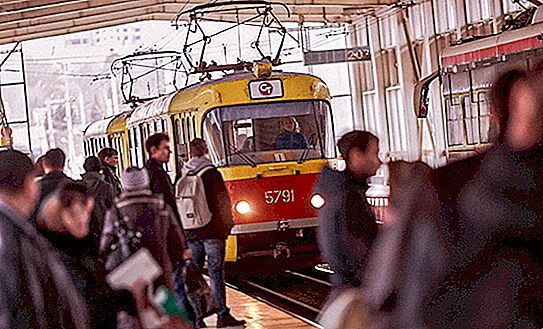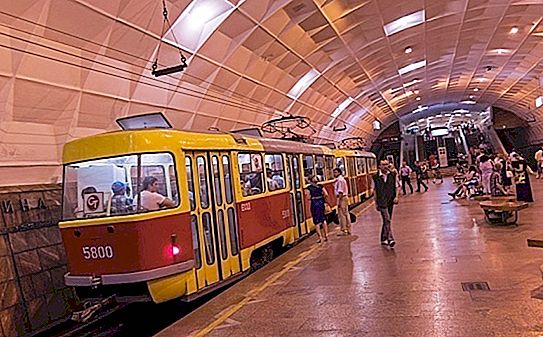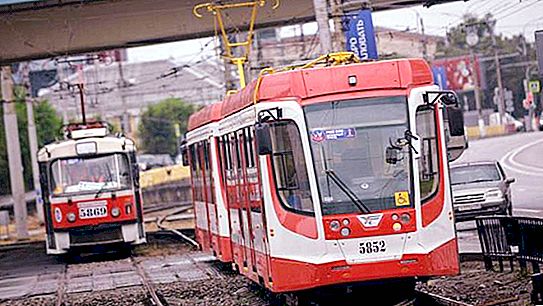City rail electric transport is a guarantee of the absence of traffic jams and a way to easily get from one point of a large settlement to another. Somewhere there are only trams, in megacities, as a rule, the metro also works. And there is such an amazing thing as metrotram. Bet you hear that term for the first time? The only metrotram in Russia is located in the city of Volgograd. This branch has become a hybrid of the tram line and the subway. It is also called in Volgograd a light rail. But how did it happen? First things first.
The city needs a subway
After World War II, Volgograd was almost completely destroyed. But the Soviet people do not care. And a huge city in just a quarter century has grown anew and become even bigger. In the 70s, a problem arose: the metropolis stretched along the Volga coast for almost 80 kilometers. And the authorities thought that it would be nice for the former Stalingrad to acquire its own metro line. This required enormous amounts of money, so the engineers had to come up with something less costly.

So the metrotram was born - a hybrid of the tram line and the subway. The fact is that from the northern part of the city to the center there was already a tram that intersected with the roadway only three times, which means that it could go quite quickly. So the engineers decided that it is possible to make underground shallow stations, into which ordinary "horned" ones would just call. So the first three underground stops were dug, and the third became both underground and aboveground.
Construction problems
When they began to dig tunnels, they faced such a disaster - at the street trams there are doors on the right side. And by metro standards, the exit from the cars is on the left side. Since they saved even on project documentation, they came up with the incredible thing - to cross the tunnels on top of each other. After all, there was no more money to replace the rolling stock.
After the opening of the first stage, the authorities promised that the metrotrams would eventually be converted into a regular metro. Workers dug three more underground stations, already without crossing tunnels, but the country fell apart, the project stood in one place. By the way, the light rail stops in Volgograd, regardless of their location, are for some reason called stations.
ST
On November 5, 1984, the first wagons en route ST - high-speed tram, in other words, set off. High-speed trams in Volgograd began to run through four districts of the city: Traktorozavodsky, Krasnooktyabrsky, Central and Voroshilovsky. In the north, the wagons started from the tractor factory, after the Central Park of Culture and Rest station, they went underground and headed to Chekistov Square, where there is a turning ring, which is already on the surface. The penultimate station of the Pionerskaya light rail tram route in Volgograd became special - trams left it from the tunnel to the overpass over the floodplain of the Tsaritsa River. An overpass led to the terrestrial part of the Voroshilov district.
ST-2
After a long 27 years, the second stage was opened. The region somehow managed to buy ten trams with doors on both sides of the cars. But this would not be enough to ensure an adequate interval between arrivals at the station. Therefore, they decided to refine themselves again - they came up with the second route ST-2. He followed the turning ring at the station "Stadium Monolith" in the Krasnooktyabrsky district, and after the "Pionerskaya" drove into new tunnels without crossing and ended at the final "Yelshanka" in the Soviet district of the city. The Chekist Square ignored the ST-2 route.
Projects on paper
In 2014, authorities began talking about the construction of the third, fourth and even fifth stages of a light rail in Volgograd. They planned to launch branches from the tractor factory to the Spartanovka microdistrict, on the northern outskirts of the city, from Komsomolskaya to the airport through the Seven Vetrov and Zhilgorodok housing estates, and from Yelshanka to Volgograd State University of VolSU. But due to the lack of funding and the change of governor, the ideas were not even designed on paper, but remained only in the form of ideas and presentations of engineers.







